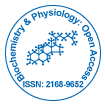开放获取期刊获得更多读者和引用
700 种期刊 和 15,000,000 名读者 每份期刊 获得 25,000 多名读者
索引于
- CAS 来源索引 (CASSI)
- 哥白尼索引
- 谷歌学术
- 夏尔巴·罗密欧
- 打开 J 门
- Genamics 期刊搜索
- 学术钥匙
- 期刊目录
- 乌尔里希的期刊目录
- 电子期刊图书馆
- 参考搜索
- 哈姆达大学
- 亚利桑那州EBSCO
- OCLC-世界猫
- 学者指导
- SWB 在线目录
- 虚拟生物学图书馆 (vifabio)
- 普布隆斯
- 欧洲酒吧
- ICMJE
有用的链接
开放获取期刊
分享此页面
抽象的
Effects Of Menstrual Cycle On Sweating During Exercise Performed In Hot And Dry Environment
Fernando M. Reis
The aim of this study was to compare the local and global sweat rates between the follicular and luteal phases of ovulatory cycles during a progressive exercise until exhaustion, held in a warm and dry environment. Eight women found to be healthy after undergoing a physical examination and with regular, ovulatory menstrual cycles participated in this study. The exercise was performed on a cycle ergometer according to the American College of Sports Medicine protocol. The test began with a power of 50 watts in increments of 25 watts every 2 minutes until exhaustion, while maintaining a speed of 50 rpm. The local sweating rate was measured using filter paper and the global sweating rate was estimated using body weight. Ovulation was detected both by serial transvaginal ultrasonography and serum progesterone measurement. Rectal temperature was higher in the luteal phase (37.54 ± 0.03ºC) when compared with the follicular phase (37.28 ± 0.05ºC, p<0.05) and increased significantly following exercise at both phases of menstrual cycle. The local and global sweat rates during exercise did not differ between the follicular phase (local 0.368 ± 0.111; global 3.03 ± 0.17 g.m-2.min-1) and the luteal phase (local 0.240 ± 0.063; global 3.20 ± 0.39 g.m-2.min-1) of menstrual cycle. Also in the recovery period after exercise, there were no differences in the sweat rate according to menstrual cycle phase (p>0.05). In conclusion, under the environmental conditions tested in this study, the local and global sweat rates elicited by progressive exercise to exhaustion were not influenced by the phases of the menstrual cycle.

 English
English  Spanish
Spanish  Russian
Russian  German
German  French
French  Japanese
Japanese  Portuguese
Portuguese  Hindi
Hindi